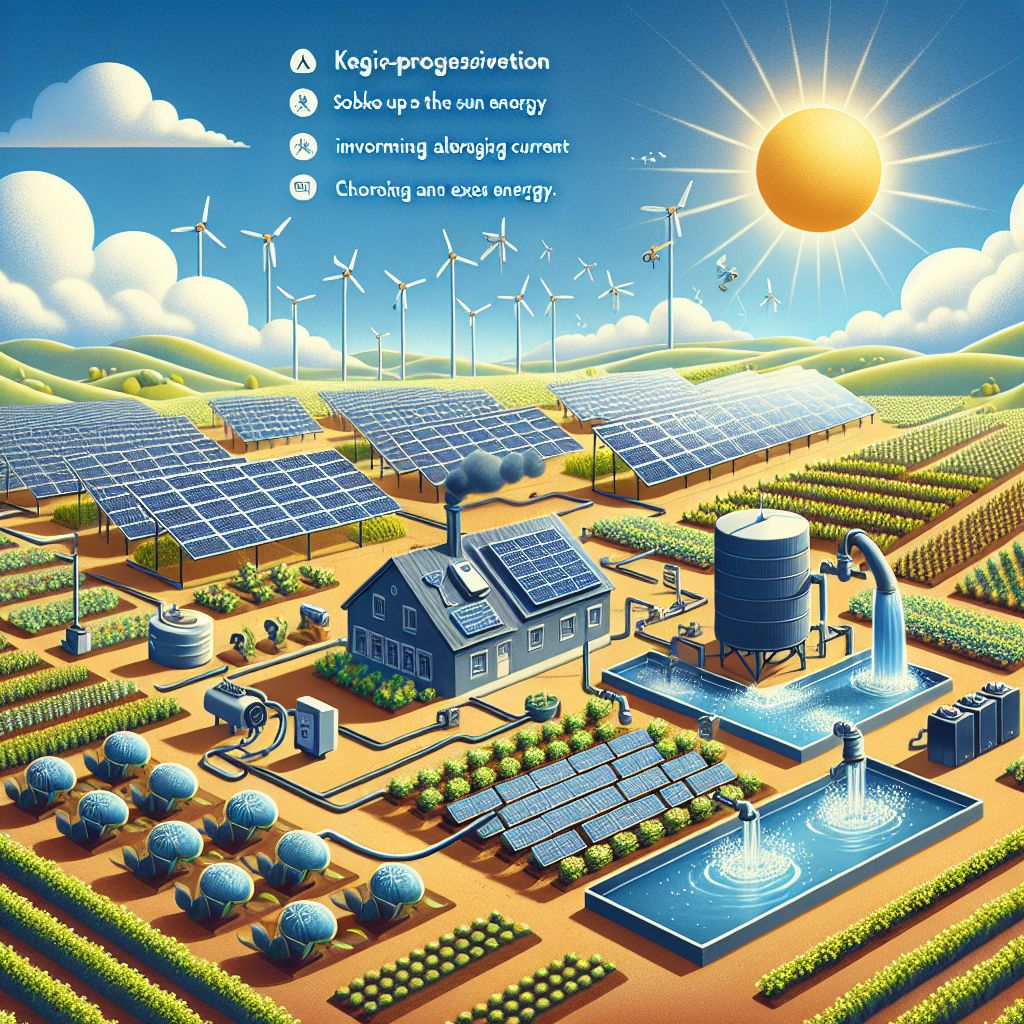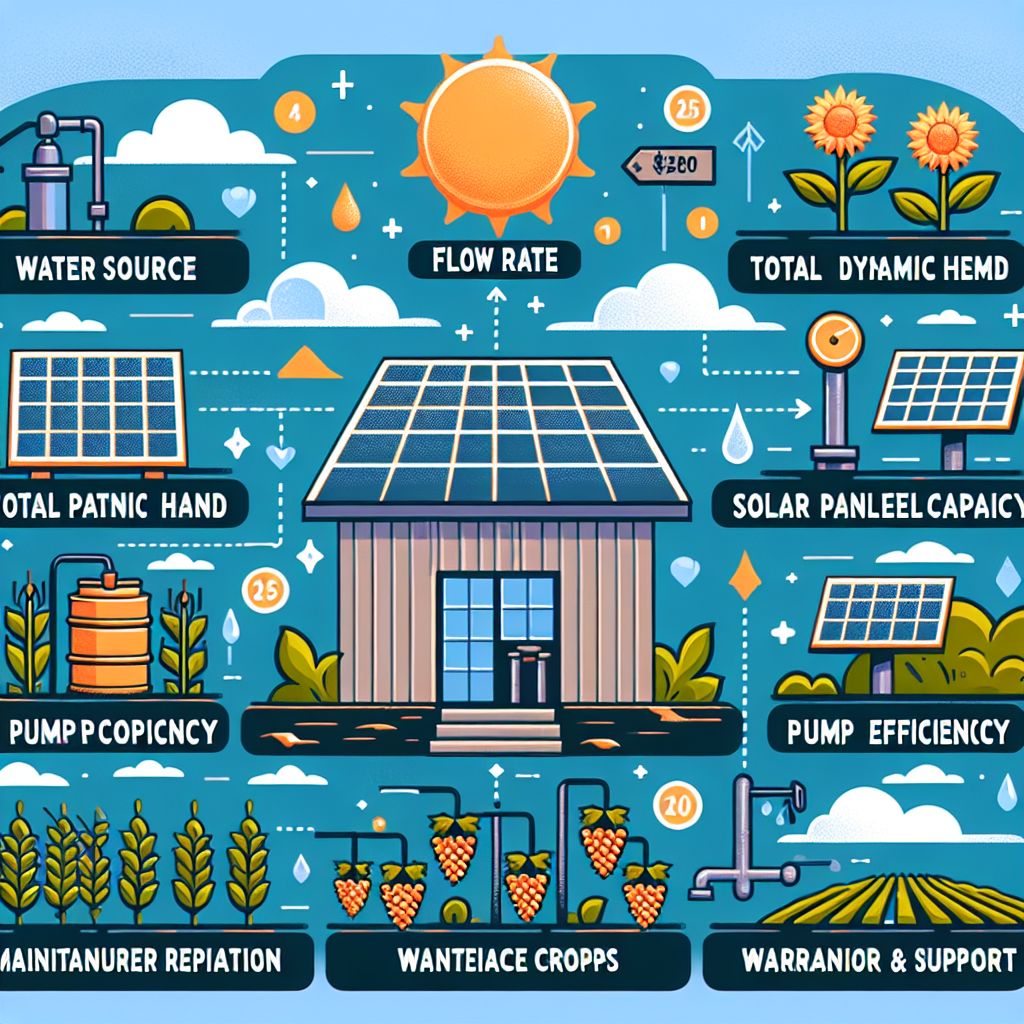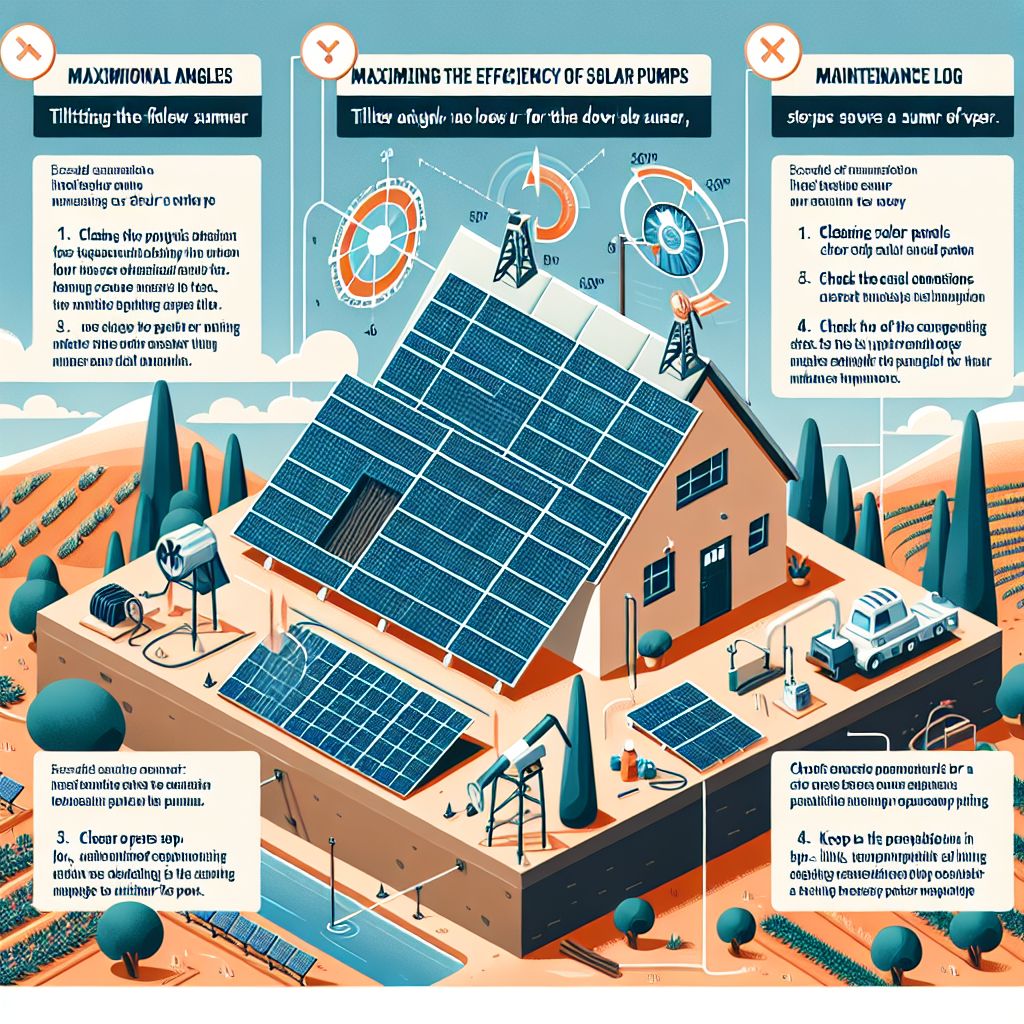
Key Takeaways
-
Solar pumps are cost-effective, require minimal maintenance, and are perfect for remote locations.
-
Understanding your farm’s water needs is crucial to selecting the right solar pump.
-
Installing solar pumps involves choosing the best location for solar panels and properly securing the system.
-
Regular maintenance and optimal panel placement enhance the efficiency of solar pumps.
-
Success stories show the positive impact of solar pumps on agriculture and local ecosystems.
Shedding Light on Solar Pumps for Irrigation
When we think about the future of farming, we envision fields that flourish under the careful watch of the sun. The sun doesn’t just coax the crops from the soil; it also powers the very systems that water them. Solar pump technology for irrigation is a game-changer for farmers. It’s not just about being eco-friendly; it’s about practical benefits that can transform a farm’s operations and output.
Renewable Energy for Water Management with Solar Pumps for Irrigation
Let’s talk about what a solar pump is and why it’s so revolutionary. A solar pump uses photovoltaic panels to convert sunlight into electrical energy to power a water pump. The beauty of this system lies in its simplicity and efficiency. Because the energy comes directly from the sun, there are no fuel costs or emissions, making it a clean and sustainable solution for irrigation.
The best part? Solar pumps are incredibly reliable in regions with plenty of sunshine, which, luckily, are often the same areas where water is scarce. This means that solar pumps can provide a consistent water supply for irrigation, even in remote or off-grid areas.
Key Components and Their Functions
Every solar pump system consists of a few key components:
-
Solar Panels: These are the workhorses, capturing sunlight and converting it into electricity.
-
Inverter: This device converts the direct current (DC) from the panels into alternating current (AC) to power the pump.
-
Pump Controller: It regulates the pump’s operation, ensuring it works efficiently with the power available.
-
Water Pump: The heart of the system, which actually moves the water from its source to where it’s needed.
-
Battery (optional): Some systems include a battery to store energy, ensuring water supply even when the sun isn’t shining.
Each component is crucial, and understanding their roles helps in selecting and maintaining an efficient solar-powered irrigation system.

Selecting the Right Solar Pump for Your Farm
Now, let’s get down to business. Choosing the right solar pump is about matching the system’s capacity to your irrigation needs. It’s not one-size-fits-all; it’s about precision and understanding your farm’s unique demands.
Matching Solar Pump Capacity to Irrigation Requirements
First, consider your water source and how much water you need to move. Are you drawing from a well, a pond, or a river? How much water do your crops need, and how quickly do you need to deliver it? The answers to these questions will determine the flow rate and pump power you require.
Here’s what you need to figure out:
-
The total dynamic head, which is the vertical distance the water needs to be lifted, plus the resistance due to pipes and equipment.
-
Your farm’s flow rate, which is the amount of water you need per unit of time, usually measured in gallons per minute (GPM) or liters per second (L/s).
With these numbers in hand, you can choose a pump that meets your needs without wasting energy.
Considerations for Different Crop Types
Different crops have different watering needs. For instance, a vineyard has different requirements than a field of corn. Think about the water delivery system as well – drip irrigation is precise and water-efficient, while sprinkler systems cover a wider area. Your solar pump selection should align with both the crop type and the irrigation method.
This below table shows you what is needed to select the right solar pump for your farms irrigation system.
|
Criteria |
Description |
|---|---|
|
Water Source |
Determine whether the pump will be drawing water from a well, pond, river, or other water source. |
|
Flow Rate |
Calculate the required flow rate based on the size of your farm and irrigation needs. |
|
Total Dynamic Head (TDH) |
Assess the vertical and horizontal distance the pump needs to move water, including friction losses. |
|
Solar Panel Capacity |
Evaluate the available sunlight and select solar panels capable of generating sufficient power. |
|
Pump Efficiency |
Look for pumps with high efficiency to maximize water output while minimizing energy consumption. |
|
Type of Crops |
Consider the water requirements of your crops and select a pump that can meet their irrigation needs. Different crops have different watering needs. |
|
Durability |
Choose pumps built with durable materials to withstand outdoor conditions and long-term use. |
|
Maintenance Needs |
Consider the ease of maintenance and availability of spare parts for long-term reliability. |
|
Budget |
Balance the initial investment with long-term savings from reduced energy costs and maintenance. |
|
Manufacturer Reputation |
Research the reputation and customer reviews of the pump manufacturer for reliability and support. |
|
Warranty and Support |
Check for warranty coverage and available customer support for assistance and troubleshooting. |
Setting up Your Solar Pump: A Step-by-Step Guide
Once you’ve selected the right solar pump, the next big step is installation. This isn’t something to rush; proper setup is key to the system’s success. Let’s walk through the process to make sure you get it right.
Remember, you’re not just installing a pump; you’re setting up a system that harnesses the sun’s power. It needs to be efficient, reliable, and durable. So, roll up your sleeves, and let’s get to work.
Finding the Best Location for Solar Panels
The first task is to find the optimal spot for your solar panels. They need a clear view of the sky, with minimal shading from trees or buildings. The location should also be close to both the water source and the area you’re irrigating to minimize the distance water needs to travel.
Consider the path of the sun across the sky and try to position the panels where they will get maximum sunlight throughout the day. Generally, facing south in the Northern Hemisphere and north in the Southern Hemisphere is a good rule of thumb. For more detailed guidance, check out our optimal placement and orientation guide for solar panels on farms.
Also, think about security and maintenance for your solar powered irrigation system. You want a spot that’s easy for you to access for cleaning and repairs but difficult for potential thieves or vandals to reach.
Connecting and Securing Your Solar Pump System
With your panels in place, it’s time to connect everything. Securely mount your solar panels, connect them to the inverter and pump controller, and then to the pump itself. Make sure all electrical connections are tight and waterproof.
It’s crucial to ground your system properly to protect it from lightning strikes and power surges. If you’re not confident in your electrical skills, don’t hesitate to call in a professional. This is about safety and ensuring your system runs smoothly for years to come.

Maximizing Efficiency: Getting the Most Out of Your Solar Pump
Efficiency is the name of the game when it comes to solar pumps. Every drop of water and ray of sunlight counts. So, how do you make sure you’re getting the most out of your system?
Optimal Solar Panel Angles for Increased Energy Harvesting
Positioning your solar panels at the right angle can significantly increase their energy harvesting capability. The optimal angle varies based on your location and the time of year. As a general guideline, your solar panel’s tilt angle should be roughly equal to your latitude, with adjustments throughout the year to account for the seasonal sun path.
For example, you can tilt the panels higher in the winter to catch the lower sun and reduce the angle in the summer when the sun is higher in the sky. There are also adjustable mounts that allow you to change the angle of your panels easily.
This below table illustrates different locations and how the solar panels should be tilted to get maximum sun light to boost its efficiency.
| Location | Optimal Tilt Angle |
|---|---|
| Equatorial Regions | Closer to 90 degrees (perpendicular to the sun) |
| Mid-Latitudes (e.g. San Diego, 33°N) | Around 30 degrees. 2 |
| Higher Latitudes (e.g. Minnesota, 49°N) | Around 45-60 degrees. 2 |
| General Rule | Tilt angle equal to the geographical latitude. 5 |
Regular Maintenance Schedules for Sustained Performance
Maintenance might not be the most exciting part of farming, but it’s essential for keeping your solar pump in top shape. Here’s what you need to do:
-
Keep solar panels clean. Dust and debris reduce their efficiency, so wash them regularly with water and a soft cloth.
-
Check all electrical connections. Tighten any that might have loosened and look for signs of wear or corrosion.
-
Inspect the pump and its components. Replace any worn parts before they fail and cause bigger issues.
Most importantly, keep a log of all maintenance activities. This record will help you track the system’s performance and plan future upkeep.
This below table will show you how to make sure you’re getting the maximizing efficiency out of your solar pump for an irrigation System on a farm.
|
Steps to Maximize Efficiency in Solar Pump Irrigation System |
|---|
|
1. Proper Pump Sizing: Select a pump with the appropriate flow rate and head capacity to match the irrigation needs of the farm. |
|
2. Optimal Panel Placement: Install solar panels in a location with maximum sunlight exposure and minimal shading to ensure maximum energy production. |
|
3. Efficient Pump Design: Choose a pump with high efficiency and low energy consumption, ideally designed for solar power operation. |
|
4. Regular Maintenance: Perform routine maintenance on the pump, solar panels, and associated components to ensure optimal performance and longevity. |
|
5. Battery Management: Implement a reliable battery storage system to store excess solar energy for use during low-light conditions, ensuring continuous operation. |
|
6. Smart Irrigation Practices: Utilize smart irrigation scheduling based on crop water requirements, soil moisture levels, and weather forecasts to minimize water wastage. |
|
7. System Monitoring: Install monitoring devices to track pump performance, solar energy production, battery status, and water usage, enabling proactive maintenance and optimization. |
|
8. Training and Education: Provide training to farm operators on proper pump operation, maintenance procedures, and energy-saving practices to maximize efficiency and productivity. |
Transforming Agriculture: Success Stories
Now that we’ve covered the nuts and bolts of solar pumps, let’s look at how they’re making a real difference in the field. These stories aren’t just about technology; they’re about people and the land they nurture.
Case Study: Solar Pumps in Arid Regions
In the arid landscapes where water is a precious commodity, solar pumps have been a lifeline. Take, for example, a small farm in the heart of a desert region. The introduction of a solar pump transformed the farm from a dustbowl into a productive oasis.
Before the solar pump, the farmer relied on erratic rainfall and expensive, fuel-guzzling generators. Now, the solar pump delivers a steady water supply, leading to a 70% increase in crop yield and a significant drop in irrigation costs.
-
The farm now produces a wider variety of crops.
-
The farmer has been able to employ more people from the local community.
-
The local ecosystem is rebounding, with an increase in biodiversity around the farm.
This story is just one of many, illustrating the transformative power of solar pumps in challenging environments.
Case Study: Impact on Local Ecosystem and Biodiversity
It’s not just about the crops; it’s about the bigger picture. Another success story comes from a farm situated by a declining wetland. The introduction of a solar pump has had a ripple effect on the local ecosystem.
By using a solar pump to manage irrigation, the farm reduced its reliance on the wetland for water. This has allowed the wetland to regenerate, bringing back bird species that hadn’t been seen in years.
The farm’s switch to solar has benefited not just their own productivity but the health of the entire local environment. It’s a powerful example of how innovative farming practices can work in harmony with nature.
FAQ
How does a solar pump save on costs compared to traditional pumps?
Traditional pumps often run on diesel or electricity from the grid, both of which can be costly and subject to price fluctuations. Solar pumps, on the other hand, use free energy from the sun. Once installed, the operating costs are virtually non-existent. The savings come from several areas:
– There’s no fuel to purchase, transport, or store. This not only saves money but also time and effort that would otherwise be spent on fuel management.
– Solar pumps have fewer moving parts, which means less wear and tear and lower maintenance costs.
– In many regions, solar equipment qualifies for tax credits, rebates, or grants, which can further offset the initial investment costs.
Can solar pumps work on cloudy days or during rainfall?
A common misconception is that solar pumps won’t work without direct sunlight. In reality, solar panels can still generate electricity on cloudy days, albeit at reduced efficiency. If your system includes a battery backup, it can store excess energy on sunny days for use when the weather turns.
Moreover, solar pumps are generally designed to have a buffer – they’re sized to pump more water than needed on the sunniest days, which compensates for the lower production on overcast days. This way, your irrigation needs are met consistently.
What is the lifespan of a typical solar pump system?
A well-maintained solar pump system can last for many years. The lifespan of the different components varies:
-
Solar panels can last 25 years or more.
-
The inverter and pump controller may need replacing or servicing after about 10 years.
-
The pump itself, if properly maintained, can last around 10 years as well.
It’s important to note that while the upfront cost of a solar pump system can be significant, the long-term savings and durability make it a worthwhile investment.
Are there government incentives for transitioning to solar pumps?
Yes, many governments around the world offer incentives to encourage the adoption of solar technology. These can include:
-
Tax credits or deductions for the purchase and installation of solar equipment.
-
Grants or loans with favorable terms to reduce the financial burden of transitioning to solar.
-
Rebates that directly lower the purchase price of solar technology.
These incentives can significantly reduce the cost barrier, making solar pumps an even more attractive option for farmers.
How do I determine the right size of solar pump for my farm?
To determine the right size for your solar pump, you need to calculate your irrigation needs based on crop type, soil conditions, and climate. Here’s what to consider:
Calculate the total dynamic head (TDH) which includes the vertical lift and the resistance in your irrigation system.
– Determine the flow rate by estimating how much water your crops need over a given period.
Once you have these figures, you can match them to the specifications of available solar pumps. It’s often a good idea to consult with a solar pump supplier or an agricultural extension service to ensure you’re making the right choice for your specific circumstances.
Conclusion: Is Using Solar Pump Technology for an Irrigation System on a Farm a Smart Investment for a Farmer?
Adopting solar pump technology for irrigation is more than just jumping on the sustainability bandwagon. It’s a smart, strategic move that can save money, increase resilience, and even boost productivity. With the sun as a partner, farmers can create a more reliable and efficient irrigation system that stands the test of time.
While the initial investment might seem daunting, the long-term savings on fuel and maintenance, combined with government incentives, make solar pumps a financially sound choice. Moreover, the environmental benefits and the positive impact on local ecosystems add to the appeal of solar pumps.
In the end, solar pump technology is not just a smart investment; it’s a forward-thinking choice that aligns with the evolving needs of agriculture and the planet. It empowers farmers to harness the sun’s power, ensuring that even as the world changes, their fields remain green and bountiful.
As the demand for sustainable agriculture practices grows, farmers are increasingly turning to solar pump technology to power their irrigation systems. This innovative approach not only conserves energy but also reduces reliance on non-renewable energy sources, making it an eco-friendly solution for modern farming needs.






